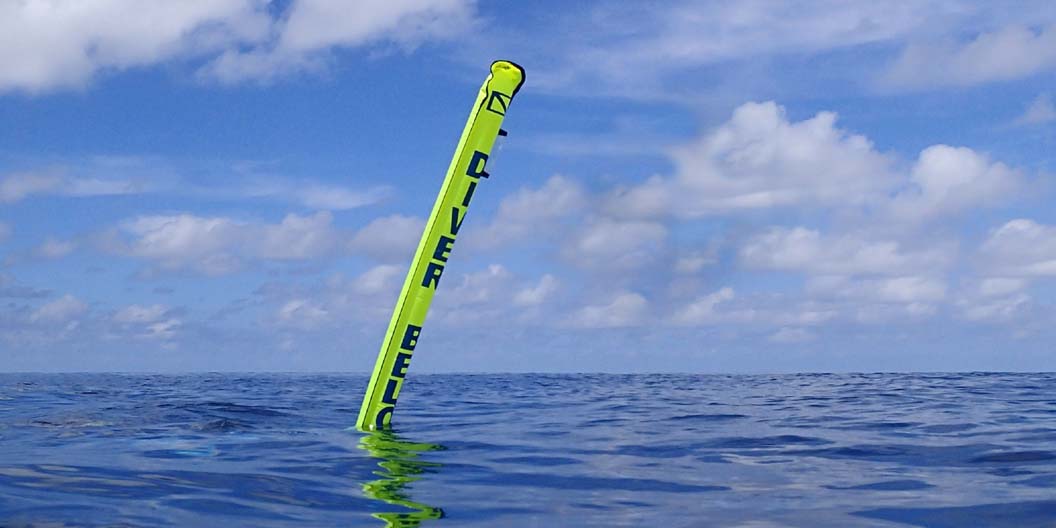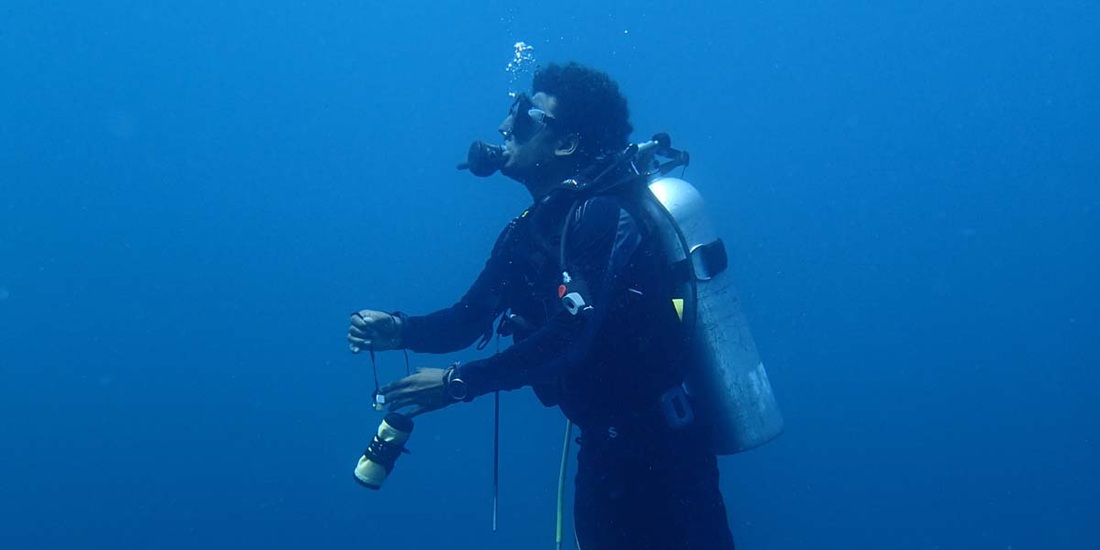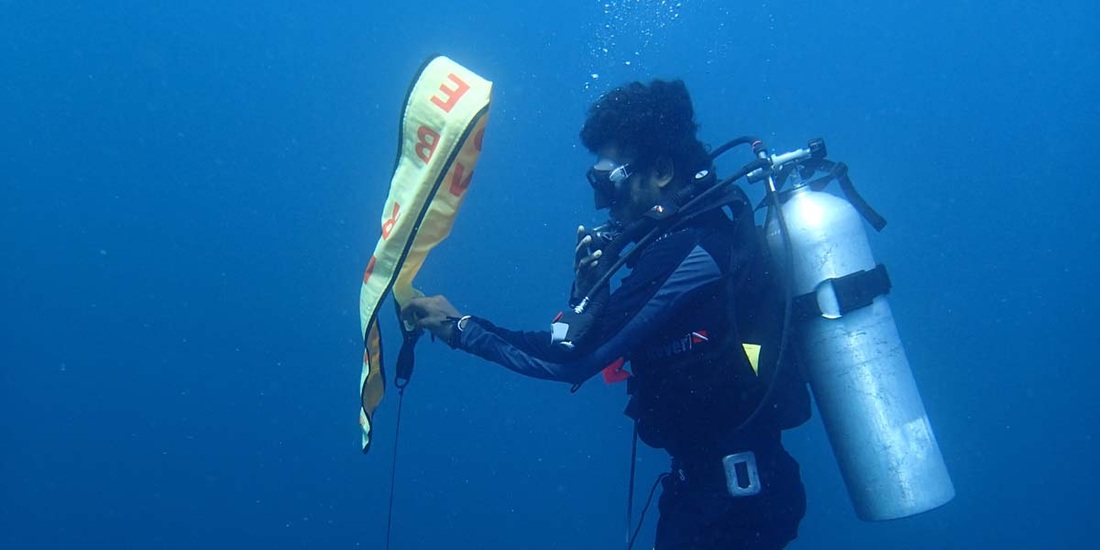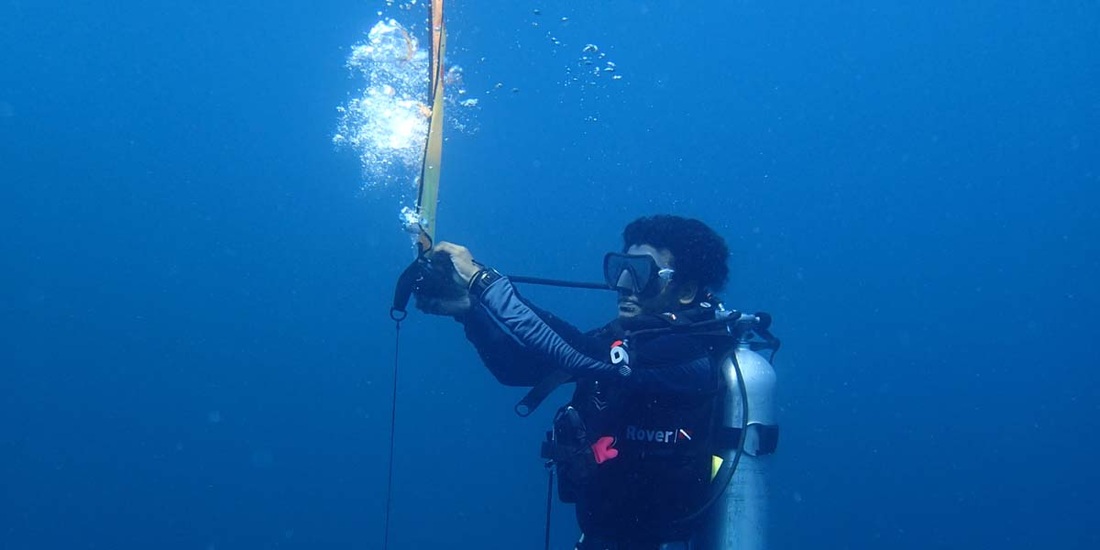Safety signal tube
|
The safety signal tube (or "sausage") is used to show the position of the divers before they reach the surface. This helps the dive boat to find the divers and is a warning to other boats that there are divers below.
The tube is a two meters long bright colored plastic bag attached to a long line. The tube is normally stored in a BCD pocket when it is not in use. As the divers reaches 5 meters at the end of their dive, they have a mandatory 3 minutes safety stop. During the stop will one of the divers in the group deploy the tube. The tube is open at the bottom and is inflated by purging air from a second stage regulator. The buoy will then rapidly ascend to the surface. It is important that the diver does not hold firmly to the tube or line, or he/she will follow the tube to the surface! |
|




